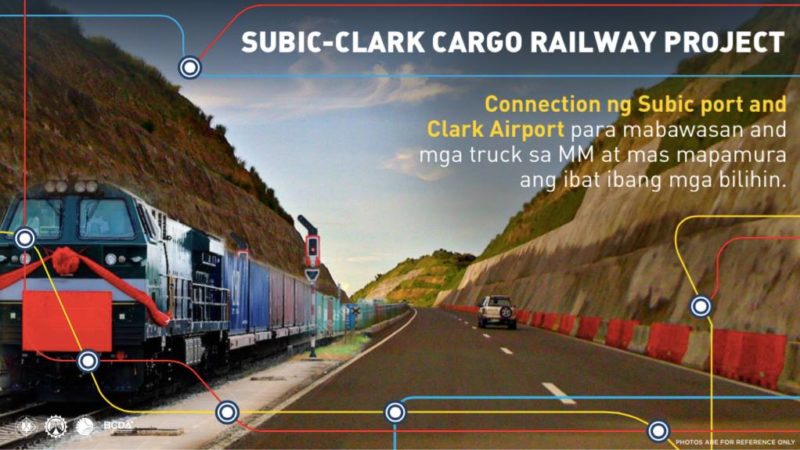 The Philippine government detailed its massive infrastructure program dubbed “Build, Build, Build” at The Dutertenomics Forum on April 18.
The Philippine government detailed its massive infrastructure program dubbed “Build, Build, Build” at The Dutertenomics Forum on April 18.
Budget Secretary Benjamin Diokno said the program, which would cost P8.4 trillion until the end of the Duterte administration in 2022, is the country’s “most ambitious infrastructure investment in (its) history”.
The projects include the construction of a series of expressways, the country’s first metro subway, and a railway in Mindanao.
Socio-economic Planning Secretary Ernesto Pernia said the accelerated infrastructure spending will account for around 5% of gross domestic product this year and 7% of GDP by 2022, and would generate additional employment of around 1.7 million jobs by 2022.
Finance Secretary Carlos Dominguez III during the same forum said: “Our program of infrastructure build-up will entail trillions in economic investments. We need to undertake these investments for the sake of the next generation of Filipinos, or else they will remain in the same poverty trap that we found ourselves in.”
He added, “For an archipelagic country, poor infrastructure is debilitating. It raises the costs of transporting goods between islands. That is the reason our food price regime is high. Our congested roads and ports discourage investors who need to operate on just on time delivery. Our high power cost and unstable supply discourage investments in manufacturing. If we examine the reasons why the Philippines fell behind other economies of this dynamic region, it has much to do with poor infrastructure.”
Expressways
One of the infrastructure projects presented during the forum is the Luzon Spine Expressway Network, a series of road and railway projects, either completed, on-going and soon-to-start, that will connect the northernmost and southernmost provinces of Luzon.
Projects under the Luzon Spine include the Tarlac-Pangasinan-La Union Expressway, North Luzon Expressway (NLEX), South Luzon Expressway (SLEX), STAR Toll, as well as projects that will start this year such as the NLEX-SLEX connector road, and Central Luzon Link Expressway Phase 2.
Public Works and Highways Secretary Mark Villar said plans for the construction of an expressway from Quezon Province to Bicol, for later extension to Camarines and Legaspi, are also being completed. Once finished before the end of the current administration’s term in 2022, Villar said travel time from Bicol to La Union will take less than 12 hours.
Another project is the Harbor Link Segment 10, which will cut travel time from Manila to Balintawak to just 10 minutes. Trucks may use the expressway to go in and out of Manila port, helping decongest EDSA and C5. The expressway, for completion by year-end, will serve 40,000 vehicles a day.
Mindanao Railway Project
Transportation Secretary Arthur Tugade detailed plans for the Mindanao Railway project, the first such project in Mindanao, which will encompass almost 2,000 kilometers.
Only the project’s first phase–involving a 104 km, single-track electrified rail line linking Tagum, Davao City and Digos in just an hour–will be completed under the Duterte administration. Costing approximately P32 billion, it will be completed by 2021. Expected daily ridership is 117,000.
Mega Manila Subway
Meanwhile, the country’s first-ever subway project, the Mega Manila Subway Project, will be constructed using Japanese tunnelling expertise.
Tugade said Duterte and Japanese Prime Minister Shinzo Abe will sign an agreement for the subway system’s construction in November.
The subway’s first phase will connect Quezon City and Taguig City in just 31 minutes and have a ridership of 350,000 per day. The 25-kilometer underground mass transportation system’s proposed stops are Mindanao Avenue, North Avenue, Quezon Avenue, East Avenue, Anonas, Katipunan, Ortigas North, Ortigas South, Kalayaan, Bonifacio Global City, Cayetano Boulevard, Food Terminal Inc. and the Ninoy Aquino International Airport.
Scheduled to start in 2020, the project is expected to be completed in the second quarter of 2024. Tugade is, however, pushing for an earlier start in 2019.
More railways
Other projects in the pipeline are the Philippine National Railway (PNR) North Railway and PNR South Railway.
Connecting Manila and Clark, the P225-million, 100-kilometer PNR North Rail project is projected to accommodate 350,000 commuters daily. It will result in travel time to Clark from Tutuban of 55 minutes. Construction will start, at the latest, by the second quarter of 2018 for completion by 2021.
PNR South Rail, on the other hand, will have two components: one connecting Manila and Calamba and Los Baños in Laguna, and another that will connect Manila to Bicol. Both will have a combined ridership of 730,000 daily. The completion of PNR North Rail is eyed in 2021 while PNR South Rail will be finished by 2022.
Another rail project is the Subic-Clark Cargo Rail that will connect Subic port with Clark airport to help facilitate goods and help decongest ports in Manila, according to Bases Conversion and Development Authority (BCDA) president Vivencio Dizon. He said the project will begin in the fourth quarter of 2017 and completed by 2020.
During the forum, Malacañang also launched the build.gov.ph website with details of the administration’s infrastructure projects, including cost and status.
According to the website, other infrastructure projects under the Build, Build, Build program are: NAIA Expressway Phase 2, Central RORO Spine Alignment Project, Cebu Bus Rapid Transit, regional airport projects, unified common station, Clark International Airport new passenger terminal, and Broadband Backhaul Modular IT Facilities, among others.
The NAIA Expressway Project, a four-lane elevated expressway that is expected to reduce travel time from the Entertainment City to Terminals 1 & 2 (Phase IIA), from 25 minutes to an estimated eight minutes is expected to benefit 80,000 travelers per day. The project will reduce traffic congestion in the vicinity of the NAIA Terminals, and will improve the international/domestic investment environment. The project will soon connect two existing expressways, the Skyway 1 and the Cavite Expressway (CAVITEX).
Among the biggest developments is the 8-kilometer, four lane NLEX-SLEX Connector Road, which will run from C3 Road in Caloocan City to Sta. Mesa in Manila and will connect to the common alignment of Skyway Stage 3. It provides connectivity between the NAIA and the Clark International Airport. It is expected to reduce travel time from SLEX to NLEX from 2 hours to just 20 minutes as well as travel time from Clark to Calamba from approximately 3 hours to 1 hour and 40 minutes. The road is expected to benefit at least 35,000 motorists/vehicles per day.
Meanwhile, the BCDA will build the country’s first and only smart and green metropolis dubbed New Clark City. This 9,450-hectare development within the Clark Special Economic Zone will feature mixed-use real estate developments namely for housing, a business continuity center that will house national government agencies, an agro-industrial park that will provide a platform for research and development, a food processing terminal, and the Philippine Sports City. The New Clark City will be a network of open spaces, served by public transport. It will be a long-term solution to traffic congestion in main urban centers.
Finance chief Dominguez said the various projects will be financed using revenue from taxes, official development assistance and commercial loans.
He explained the public-private partnership program, which previous administrations preferred, took some time to get off the ground, specifically 30 months “from idea to first shovel on the ground.” – Roumina Pablo





